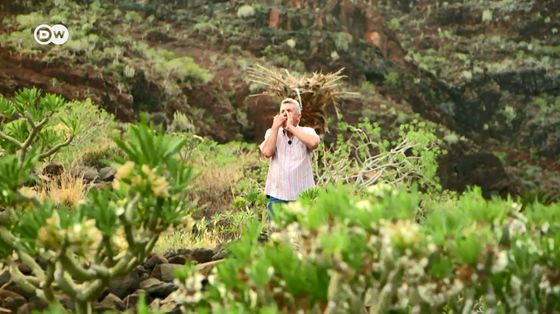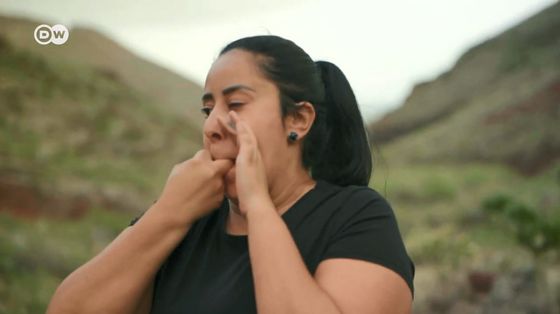What is 'whistled language' that conveys words using whistling instead of voice?

More Than 80 Cultures Still Speak in Whistles | Science | Smithsonian Magazine
https://www.smithsonianmag.com/science-nature/studying-whistled-languages-180978484/
On the islands of La Gomera and El Hierro in the Spanish Canary Islands on the northwestern coast of the African continent, you can see locals communicating with each other using a 'whistle'. The whistled language used on La Gomera and El Hierro is called 'Silbo ', and although it is often performed as a performance for tourists at the time of writing the article, in the past residents actually exchange messages. Was used for
You can see how the residents are actually using Silbo by watching the following movie.
The Whistled Language Of La Gomera --Silbo Gomero | Europe To The Maxx --YouTube
A man whistling. The mysterious rhythm and tone of the sound sounds like a bird's bark.

In another place far away, it seems that a woman is whistling something. I don't know if a stranger hears it, but Silbo can whistle the alphabet and convey words and sentences.

'And now I am making an interview with a Canadian guy,' said David Díaz Reyes, a whistled language researcher and teacher on La Gomera. (And now I'm interviewing a Canadian guy) ”can be whistled.” Whistled languages like Silbo have been identified in at least 80 cultures around the world, and in some cases they communicate by whistling instead of voice.
Whistled language has developed in many parts of the world, from Africa to Europe, Asia, Polynesia, South America and North America, many of which are rugged mountainous areas and dense forest areas. The reason for this is that whistled language reaches far beyond the human voice, says Julien Meyer, a linguist at the Center National de la Recherche Scientifique.

In whistled language, words are expressed differently depending on whether the original
In whistled languages that do not shake the vocal cords, expressions are often restricted compared to normal utterances, and especially in tonal languages with few types of tones, the messages in whistled languages tend to be limited to easily recognizable fixed phrases. I have. However, seven and tonal language · Chinantec language of southern Mexico with a tone, with a 6-8 tone Hmong language in the like, it is possible to be a whistle language convey a variety of words.
Also, when using whistled language, not all sounds can be heard because they are basically far apart from each other. Even so, whistled language users can infer words from fragmentary information heard when listening to other people's messages, and in the case of sentences, they can receive meaning with high accuracy by considering the context before and after. matter.
According to Díaz Reyes, who teaches whistled language on La Gomera, learning whistled language is relatively easy. First of all, in the first 2-3 months, I learned to whistle loudly while distinguishing between high and low sounds, and in 4-5 months I was able to play some words, and in 8 months I could convey the message I wanted to convey. Díaz Reyes says that you will be able to whistle and hear others' whistles correctly.

Whistled language is not only interesting as a culture, it is also attracting attention from linguists for two reasons, says Fanny Meunier, a linguist at the Center National de la Recherche Scientifique. The first reason is that 'how do people's brains understand the message of whistled language?' Is still not well understood. Whistled language lacks a lot of information when compared to what people speak, but whistled language users can nevertheless understand sentences. He also knows that even non-speakers of whistled languages can distinguish between vowels and consonants with accuracy beyond chance, and that musicians in particular are better at recognizing consonants than ordinary people.
The second reason is that whistled language is believed to have characteristics similar to those of the early languages produced by modern humans. The big challenge in language is to 'control the vocal cords and make them quiver properly', and even apes close to humans do not have a way to control the vocal cords. On the other hand, as the research result that 'the orangutan imitated the whistling of the keeper' is reported, the whistling without vocal cords is easier than the spoken language, so it is possible that primitive human beings used it for exchanging information. there is. Meunier also pointed out that the situation where the whistled language of 'communication with a long-distance partner' is used is consistent with the situation of primitive people who had to communicate during hunting.
It should be noted that these points do not mean that 'whistled language has traces of ancient languages', Meunier warns. The earliest whistled language may not have been a copy of the language that uses the vocal band, but the modern whistled language is 'whistling the words spoken by the mouth', so it retains the early language. It does not mean.
In recent years of modernization in remote areas, the whistled language used by traditional groups has rapidly disappeared, but some have seen a light of hope. In addition to UNESCO's designation of the whistled language used in Silbo and Turkey in the Canary Islands as an intangible cultural heritage, La Gomera has been conducting classes to teach Silbo to children on the island since 1999, and young people can use Silbo. It is said that it has become. 'If people didn't make this effort, Silbo would probably have disappeared,' said Díaz Reyes.

Related Posts:







